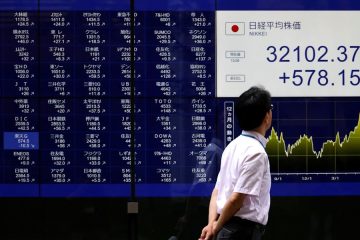Analysts Want the Fed to Come Up with a Long-Term Fix to Calm the Repo Market

The Federal Reserve’s daily interventions appear to have calmed U.S. money markets and prevented repo contagion from infecting other key areas of finance.
But to create a lasting peace, the central bank needs to take much grander action in late October or sooner, according to a growing list of experts.
On Monday, which was the last day of the third quarter, overnight repo rates were slightly elevated, but it was nothing like two weeks ago or even other recent quarter-ends, when rates skyrocketed as banks traded to tidy up their balance sheets. Tuesday was also uneventful.
This represents a success for the Fed, which has offered to inject at least $ 75 billion into the repo market every day since Sept. 17. But observers want to hear more–in some cases much more–from the Federal Open Market Committee after it meets Oct. 29-30.
Wall Street analysts estimate the Fed needs to buy roughly $ 200 billion to $ 500 billion of Treasuries, and some want a standing repo facility–a permanent liquidity conduit, as opposed to the ad-hoc actions the Fed has taken for two weeks–as a backstop against unusual spikes in money-market rates.
Risk still looms
“The lesson is that money markets were more fragile than many people expected, and the situation calls for some more-permanent solution,” said Brian Sack, former head of the New York Fed’s market group, who warned five years ago that the central bank needed a standing repo facility put in place. “Temporary operations definitely helped, but to truly calm markets, the FOMC should implement one of these policy steps in the near term. Otherwise, we could continue to see strains in money markets in the fourth quarter.”
Fitch Ratings Ltd. weighed in on Tuesday, arguing that any further volatility in the U.S. repo market could extend to other asset classes and affect smaller broker-dealers, mortgage REITs and hedge funds. “Continued illiquidity issues leading to higher or more volatile borrowing costs would be viewed negatively from a credit perspective and could lead to ramifications more globally,” according to the Fitch report.
It was the now-more-than-$ 2 trillion repo market where some of the first signs of trouble emerged ahead of the 2008 financial crisis, though analysts caution against drawing direct comparisons. The reasons for mid-September’s tumult, they say, were entirely different: The episode boils down to a liquidity squeeze and not deeper, widespread concerns about the quality of collateral or credit in the market.
Many initially viewed the Fed’s injections as falling short because they didn’t address the root of the problem: insufficient reserves in the banking system. In hindsight, though, those actions “quickly and decisively stopped repo rates from rising further and ensured that repo stress in Treasury collateral did not spread,” said Shahid Ladha, head of G-10 rates strategy at BNP Paribas in New York.
Systemic problem
“The Fed needs to add more permanent liquidity in October or the funding issues could become more systemic,” he said.
Had the New York Fed not stepped in to offer a $ 75 billion injection on Sept. 17 and repeated its operations daily since then, trouble in repo could’ve spread and caused tighter credit conditions elsewhere, said TD Securities senior rates strategist Gennadiy Goldberg.
“All these markets are tied together and are interconnected,” he said by phone Monday. “Banks can last several days without a squeeze impacting their operations. But a prolonged period of uncertainty and higher repo rates at the front-end would have made it harder for banks to finance their daily operations, made them unwilling to lend, led to a freeze on credit, and forced them to sell assets like Treasuries and corporate bonds. That’s where the contagion happens.”
Stresses spread
Within a day of the sudden surge in the overnight rate on Treasury repurchase agreements that began on Sept. 16, the repo squeeze began to show up in currency markets and dollar funding. For instance, the cost to borrow greenbacks for one week while lending euros almost doubled. In addition, swap rates from euros, pounds, the yen and the Australian dollar began to shift.
When the Fed didn’t put in place a standing repo facility at its Sept. 17-18 meeting, dollar swap spreads with a two-year tenor cratered to a record low.
It wasn’t until Sept. 23, almost a week after the New York Fed’s first intervention, that dollar funding pressures began to show signs of easing, as reflected in cross-currency spreads.
In a Sept. 26 blog post for the Peterson Institute for International Economics, Sack and Joseph Gagnon, another ex-Fed official, wrote that the recent events underscored how unexpected developments could put pressure on money-market rates.
Reached by phone Monday, Sack, now director of global economics for money manager D.E. Shaw, said the Fed needs to adopt one of the fixes he and Gagnon proposed. Buying Treasuries would be the easiest to implement, he said.
More must-read stories from Fortune:
—Why the repo market is such a big deal—and why its $ 400 billion bailout is so unnerving
—What’s the difference between a recession and a depression? Here’s what history tells us
—Charles Schwab on the lessons he’s learned over a lifetime of investing
—The 5 most valuable unicorns, according to their latest funding rounds
—“Performance chasing”—and why it can be perilous for your portfolio





